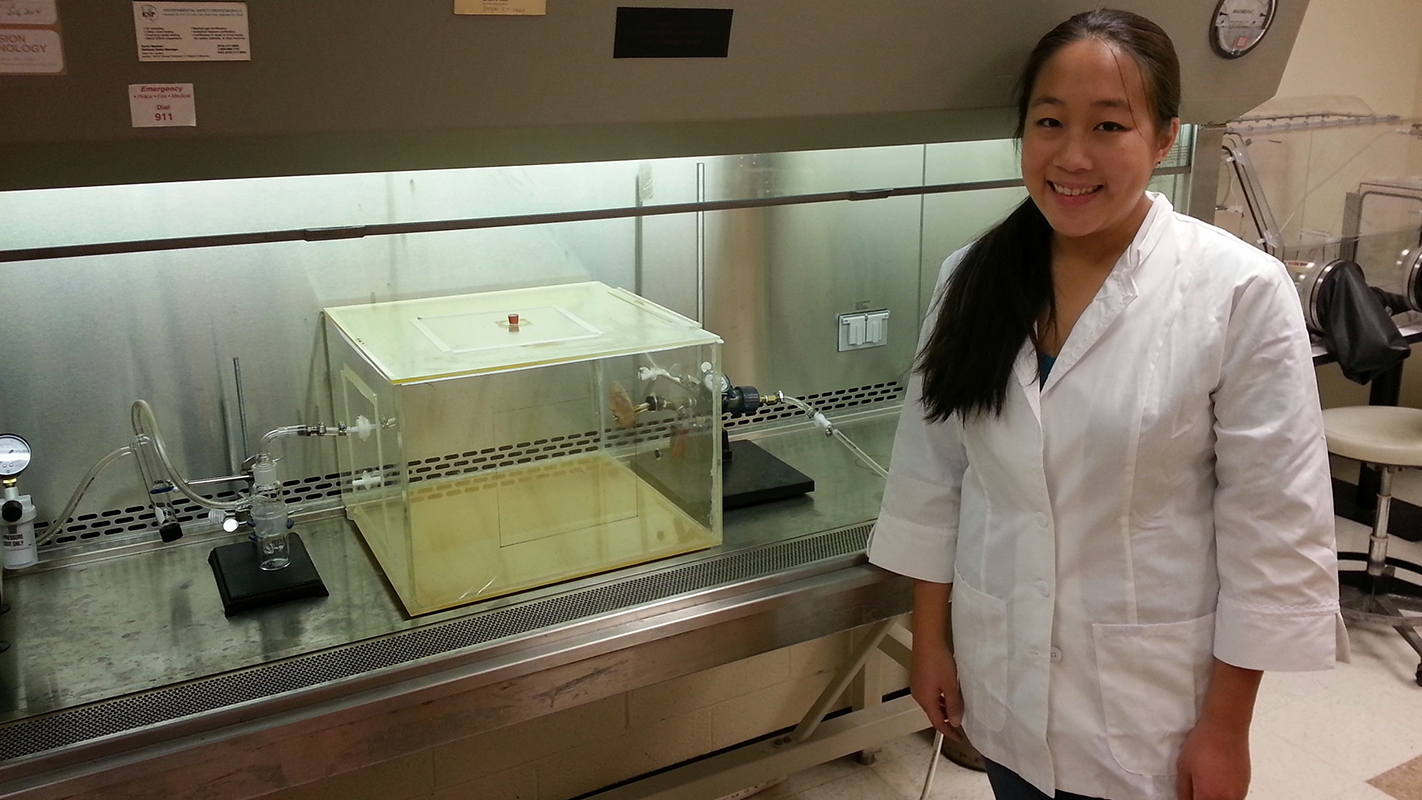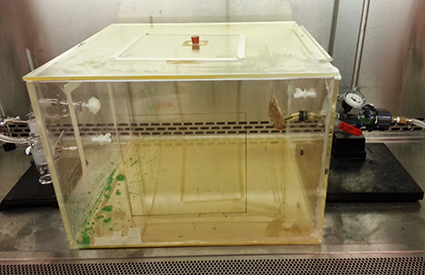Vomiting Device Offers First Direct Evidence That Vomit Aerosolizes Norovirus-Like Particles

For Immediate Release
Using a vomiting device of their creation, researchers at North Carolina State University and Wake Forest University are reporting the first direct evidence that vomiting can aerosolize virus particles similar to human norovirus.
“Epidemiological evidence has pointed to virus aerosolization during vomiting as a likely route for spreading norovirus, and our work here confirms that it’s not only possible but probable,” says Lee-Ann Jaykus, a professor of food, bioprocessing and nutrition sciences at NC State, co-author of a paper on the work, and director of the USDA-NIFA Food Virology Collaborative initiative (NoroCORE).

“When one person vomits, the aerosolized virus particles can get into another person’s mouth and, if swallowed, can lead to infection,” Jaykus says. “But those airborne particles could also land on nearby surfaces like tables and door handles, causing environmental contamination. And norovirus can hang around for weeks, so anyone that touches that table and then puts their hand to their mouth could be at risk for infection.”
The research team developed and used a vomiting device that allowed them to precisely control the volume, viscosity and pressure of simulated vomiting. (More information on the vomiting device is available here.)
The researchers contaminated fake vomit with a virus called the MS2 bacteriophage – a commonly-used proxy for norovirus that does not harm humans – and used the vomiting device to determine whether the virus was bioaerosolized during a simulated vomiting event. The researchers also wanted to know, if the virus was aerosolized, how much of the virus was becoming airborne.
“In terms of overall percentage, not a lot of the virus is aerosolized,” says Francis de los Reyes III, a professor of civil, construction and environmental engineering at NC State who is corresponding author of the paper. “But in absolute terms, it is a lot compared to the amount of virus needed to cause infection.”
“At most, only 0.02 percent of the total virus in the vomit was aerosolized,” Jaykus says. “But that can still amount to thousands of virus particles – more than enough to infect other people.”
Future directions for the work include assessing how long virus particles can remain airborne, and how far they may be able to travel in the air.
The paper, “Aerosolization of a Human Norovirus Surrogate, Bacteriophage MS2, During Simulated Vomiting,” was published August 19 in the journal PLOS ONE. Lead author of the paper is Grace Tung-Thompson, a recent Ph.D. graduate from NC State. Co-authors include Dominic Libera, a graduate student in de los Reyes’s lab who helped develop the vomiting device, and Dr. Kenneth Koch of Wake Forest’s School of Medicine.
The material reported here is based upon work that is supported by the National Institute of Food and Agriculture, U.S. Department of Agriculture, under award number 2011-68003-30395. Any opinions, findings, conclusions, or recommendations expressed in this publication are those of the authors and do not necessarily reflect the view of the U.S. Department of Agriculture.
-shipman-
Note to Editors: The study abstract follows.
“Aerosolization of a Human Norovirus Surrogate, Bacteriophage MS2, During Simulated Vomiting”
Authors: Grace Tung-Thompson, Dominic Libera, Francis L. de los Reyes III and Lee-Ann Jaykus, North Carolina State University; Kenneth L. Koch, Wake Forest University School of Medicine
Published: Aug. 19, PLOS ONE
DOI: 10.1371/journal.pone.0134277
Abstract: Human noroviruses (NoV) are the leading cause of acute gastroenteritis worldwide. Epidemiological studies of outbreaks have suggested that vomiting facilitates transmission of human NoV, but there have been no laboratory?based studies characterizing the degree of NoV release during a vomiting event. The purpose of this work was to demonstrate that virus aerosolization occurs in a simulated vomiting event, and to estimate the amount of virus that is released in those aerosols. A simulated vomiting device was constructed at one?quarter scale of the human body following similitude principles. Simulated vomitus matrices at low (6.24 mPa*s) and high (177.5 mPa*s) viscosities were inoculated with low (108 PFU/mL) and high (1010 PFU/mL) concentrations of bacteriophage MS2 and placed in the artificial “stomach” of the device, which was then subjected to scaled physiologically relevant pressures associated with vomiting. Bio aerosols were captured using an SKC Biosampler. In low viscosity artificial vomitus, there were notable differences between recovered aerosolized MS2 as a function of pressure (i.e., greater aerosolization with increased pressure), although this was not always statistically significant. This relationship disappeared when using high viscosity simulated vomitus. The amount of MS2 aerosolized as a percent of total virus “vomited” ranged from 7.2 x 10-5 to 2.67 x 10-2 (which corresponded to a range of 36 to 13,350 PFU total). To our knowledge, this is the first study to document and measure aerosolization of a NoV surrogate in a similitude?based physical model. This has implications for better understanding the transmission dynamics of human NoV and for risk modeling purposes, both of which can help in designing effective infection control measures.
- Categories:


